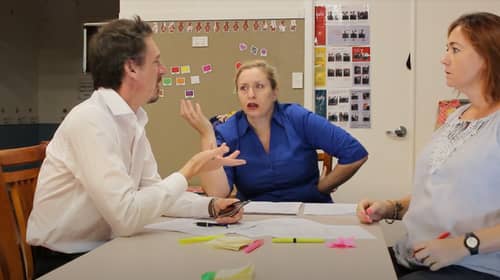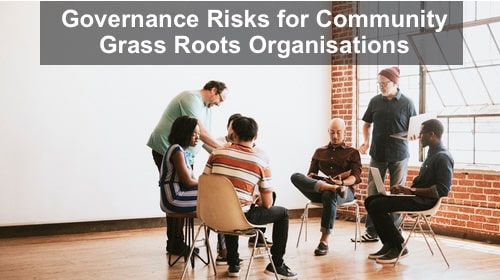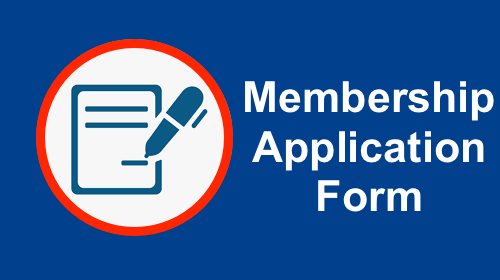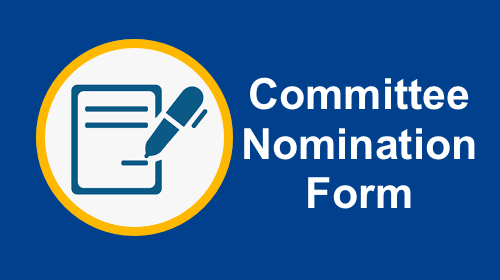Due Diligence
Authored by:
iClick2Learn Team
Translate Text
‘Click the video titles below to view them’
Transcripts are available under the videos
So today we’re going to be talking about due diligence. Now, whether you’re new to a board or you’re already on a board and you actually want to make sure, for continuous improvement processes, that you’re thinking and considering all the things that you need to, these nine steps will get you started.
The first of these is knowing your legal structure and the legislation. So what this is talking about is what sort of organisation are you constituted as. There’s a majority and large variety of them out there, so let’s just cover a couple of those quickly.
The first is a federal level under the Corporations Act. So if you’re a non-profit, that means that if you are legislated at a federal level, you report to ASIC, the Australian Securities and Investments Commission, and you’re actually a company limited by guarantee.
The more common for smaller non-profits is a state-based legislation, which is the Associations and Corporations Act, and that differs in every single state. So the Associations and Corporations Act, that means that you will report to, whether it’s, for example, Department of Commerce or a Department of Fair Trading. Again, those departmental names can differ in each state. So that means that you’re an association legislated under your state and you report to that state body.
There are a couple of others at a state level. There’s the Cooperatives Act. You’re probably thinking of Farmers Coop. Well, that is correct. There’s also a couple of different coops that are cropping up in cities as well, which is a farm-to-plate style. Other cooperatives, you can have a trading cooperative, which is a shareholder. So that is a farmer. That is a for-profit model. But the non-profit model is actually a non-trading coop. Here’s an example. The Yackandandah Service Station down in Victoria is a non-trading cooperative. Also, a few independent radio stations as well.
Okay, so the second thing to be clear about, is your organisation and it’s constitution. So, we talked about Acts and what your organisation’s incorporated under in the first part of the video. But the second part of the video is saying, well that’s all well and good but what are our rules of operating. You know, you can’t play a game of football without knowing what the rules are and this is what your constitution is.
Your constitution sets out it essentially interprets the Act. So, what it sets out is the rules of play. It’s things like when you have meetings, the notice periods, what the quorum is. So, it’s really important that you understand some critical areas of those. The other thing that it does cover, I know this a question for a lot of you, is what is your liability, your personal liability. You know, I get this question quite often.
To what extent am I personally liable generally? And you know, is my house up for grabs? Am I likely to to be in a situation where my, my house could be taken from me. So, rest assured providing that obviously you have good intentions, generally speaking in a court of law, your Act will actually protect you. So make sure you look at that liability clause. Now, if you want to know other things to make sure you look at in your organisational constitution, have a look at our due diligence check list.
We’ll provide the link here and we’ve actually given you quite a comprehensive checklist for you to go through and it include finding those areas such as the number of your quorum in your constitution
And the third step, your directors’ duties. Now there’s two parts of directors’ duties and you’ve got to be very, very careful to make sure that you do consider both of them. It’s very easy to get straight into the work and only consider what the organisation expects from you. But there’s also the common law and statutory law side.
So basically what I mean is what does the act say your duties are? So if you’re a position holder on a board, if you’re a secretary, you actually have different roles and responsibilities that you’re actually required by law to make sure they’re fulfilled. Same as a treasurer, different roles and responsibilities that a treasurer must do. So it’s very important that you understand what those statutory law requirements are. And if you’re wondering what they are, a very, very simple way is to actually go back to your constitution.
Find what the position holders are required to do. And what you would do is then include those in a position description, because the second side of knowing your directors’ duties is actually knowing and understanding what the organisation actually expects from you. So what are the expectations of meetings? Are they every month? Are you required to attend other advisory panels? Do you have set performance indicators as a board member that the organisation expects you to actually achieve? So that’s why it’s really important to know those sides of your directors’ duties. What are your statutory law requirements and what are the organisational expectations.
So the fourth point is knowing the management processes. Now before you start saying, “But we’re not managing staff,” remember, if you’re on a strategic board, there are a lot of different organisations out there that actually do get involved more as a management committee. So, this part, number four, is going to differ. And I’ll give you a couple of examples of the differences. So let’s talk about a strategic board first. What am I saying when I’m talking about management processes?
Now the Centro case that many of you would be aware of, if you’re not, just google the Centro case. You’ll actually come up with a whole range of information on this. And one of the outcomes of that case was the judge basically declared that it was acceptable to delegate, but that didn’t mean that that absolved you of your responsibility. And this is something that I’ve been talking about for years. So, you can be delegating your duties. So, you actually can delegate, if your the treasurer on a strategic board, you can delegate your duties to the chief financial officer or to the book keeper. And that’s fine. But it still doesn’t absolve you as the treasurer or, indeed, the rest of the board to know what their financial situation is, to make sure that they’re aware of transactions, et cetera.
The level of detail that you will want to know and want to drill down to, of course, will differ from organisation to organisation. The important thing is that if you’re on a strategic board, you’re a lot more removed from the management processes. You need to understand and be assured that they are in place. So if you’re on more of a management committee, the important thing here about nine management processes is making sure that you’re very clear about what the difference between governance and management is. So, remember you’re on a board. I know that you’re probably in there in the organisation, and you’re working and or volunteering, but at the end of the day, you are on a board. That means that when you sit around that table, when you act as a board member, you need to be thinking about the future. So there needs to be more discussion around your capacity to deliver and your ability to do so.
And there needs to be more discussion around whether your organisation’s still viable and how do you make sure that we’re sustainable in the future. Where the issue comes in is we tend to talk about management committees at a small organisation actually tend to talk about the nitty gritty. Who’s just spent $60 on pens? We don’t want to be having those discussions, okay? There needs to be delegations of authority and approved budgets to make sure that those discussions do not come to the board. Look, sure, if there are issues, of course you got to discuss it. But what I’m talking about is a management process that’s put in place to try and lessen those accountability discussions at a board level. Because that is really the job of your management team.
So number five, the numbers Yes. I’m talking about the life blood of the organisation, cash is king as they say. But importantly this is a strategic look at your numbers, there are things that you need to know, things such as, are you insolvent? Now you can do what we call a quick ratio or a current ratio, if you wanted to google that you certainly can, there’s a heap of information out there on how to actually do that. And what that does, is that actually looks at how solvent you are, so how much money do you have.
The thing about the numbers that’s important though for you to know is what is the rhythm. So do you have set points throughout the year that, you know, all of a sudden your projection is really high because your actually expecting a grant and that’s pretty standard, but then perhaps the next month, or a couple of months after, it really flat-lines. So I’d actually, if you’re joining as a board member, in that flat-line month, you’re probably thinking, oh my gosh, this is terrible, we’ve hardly got any money, but in actual fact what you need to know is the cycle. So knowing the numbers is also about knowing your financial statements and being able to read them. Really understanding what this information is.
The thing about financial statements is, and I know you’re going to know this, different organisations have different financial statements. So that means you’re not comparing apples to apples, you might be on three or four different boards at the moment and every one of those boards has different financial statements. So that is why it’s really important that you actually take the time and you sit down either with the treasurer of the organisation or book-keeper, the CEO, the manager etc, somebody who can actually give you some really valuable information about actually understanding the financial statements.
There is of course a big drive for what we call a Standard Chart of Accounts, for those organisations that have Standard Chart of Accounts, certainly does make it a lot easier, again if you want to know more information about that, you can just google Standard Chart of Accounts, I might actually provide the link down here for you as well. I know certainly a lot of funders are starting to ask for that, so it may be something to consider for you, certainly does make the job easier for a board member to understand the accounts in an organisation.
And the third step, your directors’ duties. Now there’s two parts of directors’ duties and you’ve got to be very, very careful to make sure that you do consider both of them. It’s very easy to get straight into the work and only consider what the organisation expects from you. But there’s also the common law and statutory law side.
So basically what I mean is what does the act say your duties are? So if you’re a position holder on a board, if you’re a secretary, you actually have different roles and responsibilities that you’re actually required by law to make sure they’re fulfilled. Same as a treasurer, different roles and responsibilities that a treasurer must do. So it’s very important that you understand what those statutory law requirements are. And if you’re wondering what they are, a very, very simple way is to actually go back to your constitution.
Find what the position holders are required to do. And what you would do is then include those in a position description, because the second side of knowing your directors’ duties is actually knowing and understanding what the organisation actually expects from you. So what are the expectations of meetings? Are they every month? Are you required to attend other advisory panels? Do you have set performance indicators as a board member that the organisation expects you to actually achieve? So that’s why it’s really important to know those sides of your directors’ duties. What are your statutory law requirements and what are the organisational expectations.
Okay, number seven, we’re talking about the rhythm and I’m not talking dancing. No, no, I’ll be serious now. So when we’re talking about the rhythm, what I mean is, if we looked at a calendar, what days do things happen? And I’m not just talking about your board responsibilities. I’m just not talking about writing down, we’ve got a board meeting every month or the first Tuesday.
I’m also talking about other things that happen in the organisation. One of the things that you could liken this to is actually a compliance schedule as well. You know, we were talking about risk earlier. A compliance schedule is a really good way of managing that risk. A compliance schedule basically says, over the period of 12 months, what actually happens? So this is an important thing for you to know as a board member. When does your audit have to happen? When is your super paid? When do the volunteers get together? When is it volunteer day, et cetera.
These are all the things that I’m talking about. Larger organisations will actually have those separately. They’ll have a calendar of events, and then they’ll have a compliance schedule. But if you’re in a smaller organisation, there’s no reason why you couldn’t look at combining them both. The important thing is to make sure that obviously all board members have a copy of the compliance schedule.
So number 8 is knowing the external influences. Gosh, wow, this is, this is a huge topic to talk about in such a small amount of time. But let’s just give you an overview of what I mean. Knowing the external influences essentially is about looking at the marketplace and saying, “What is likely to impact on us or influence us in our future decisions?” Things like knowing what’s happening with the ACNC. Is it still going ahead, is it not? If you’re a deductible gift recipient status, that might be important to you.
Things such as knowing what’s happening or look at what’s happening with the NDIS, that’s really important because it actually changes your landscape. And what you’ve really got to focus on is you’ve got to focus on marketing to individuals. Another thing about know the external influences is knowing your competitors. So what are they actually doing in the marketplace? How are they marketing? How are they attracting the same people that you’re trying to attract? So whether you’re running a service, a program, or an event, that is a really important thing to understand. So essentially, market research.
Okay so the right path. Okay here we come, after everything that we’ve done, were talking about one of the most important things, and that is your strategic plan. Look, I know to some of you that’s a swear word. I know, twenty page documents, they sit on the shelf and they do nothing.
For those organisations that are smaller this can just be a one page plan. In actual fact, even if you’re a large organisation you should still be able to get it in a one page plan. One of the most common examples of that, and this organisation works with Fortune 500 companies in America, and they still get all their information in one page plan, is the Rockefeller Habits. Brought out, I think I the uh, the late 80’s early 90’s, but it’s still a really, really valuable tool. So don’t think that there’s too much information, we can’t get it in a one page plan. I
t’s actually better that you do. It’s better that you do because you can communicate that more clearly, and you can also make sure that it is easily digestible. Sometimes if it look like hard work, it’s hard work so, it’s hard to get people on board. Ah, for the rest of you a one page plan could just be dot points or a very simple table. The important thing is that you actually have something documented that says this is where we’re heading in the future. These are the goals that we want to achieve. This is are target, and these are the things that we’re going to do and the actions we’re going to do to make sure that we get there. So, knowing the right path is really, really important And setting that direction and formalising that direction is really important.
The strategic plan is the very foundation of your budget. It’s the very foundation of your marketing and communication plan, of your fundraising plan. So it’s really important that we do take the time to plan and document what were doing in the future. So the other thing, not just about knowing market research, the other thing that you need to make sure that you do, and you can use a range of tools for this, is undertake an environmental analysis. So what that means is, that looks at, and if we used one, let’s just use the PEST model, which is P. E. S. T. an acronym for Political, Environmental, Social, and Technological.
Now that’s quite an old one, there’s a number of others out there that include ethical, economic, um, there’s a, quite a large number of STEEPLE, STEP, you know. There’s a number of acronyms for these sorts of things. An environmental analysis essentially is what I’m talking about. You could actually use that to start brainstorming some things that you may need to make sure that you consider.
Related posts
- Tags | Boards and Committees, Compliance, Governance, Legals, Risk, Roles, Strategic plan
























